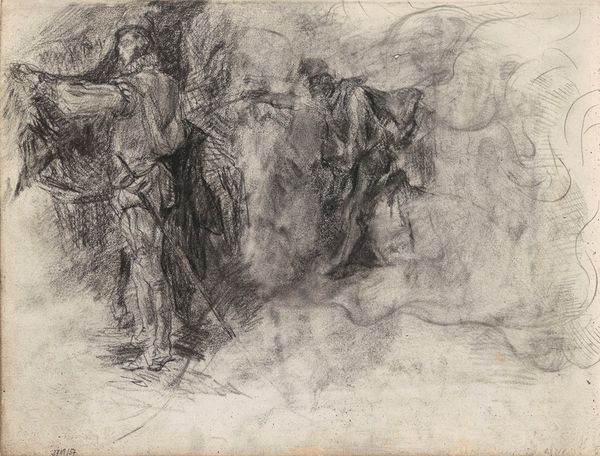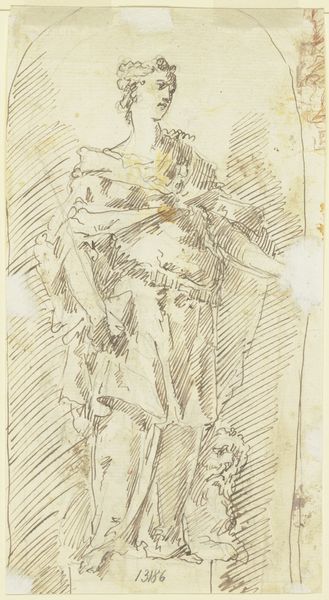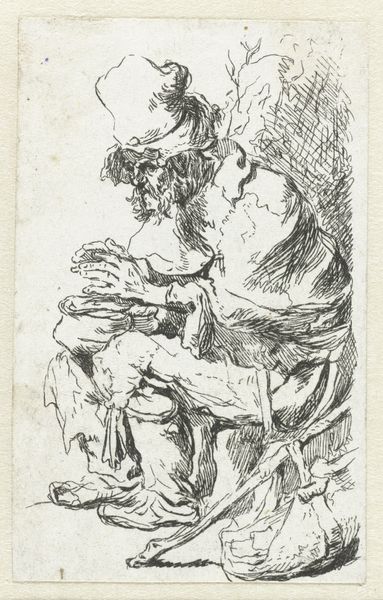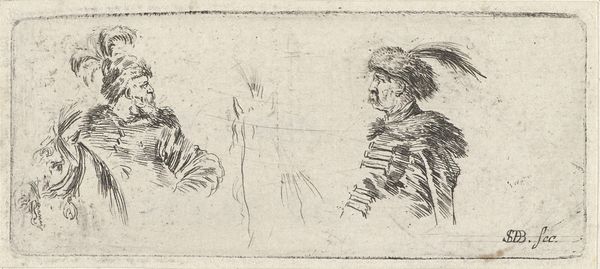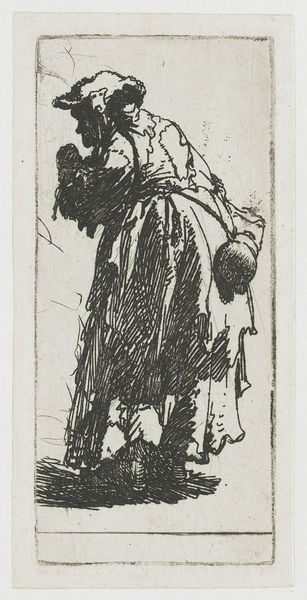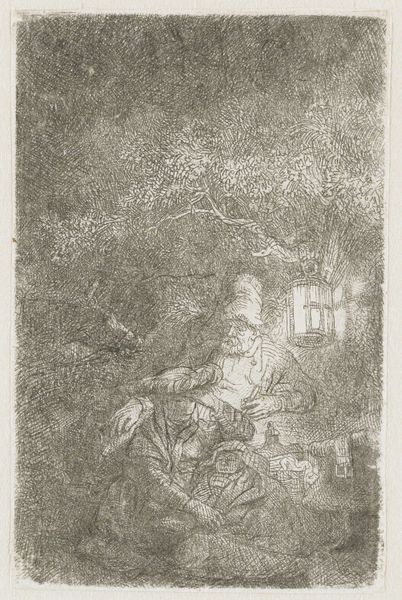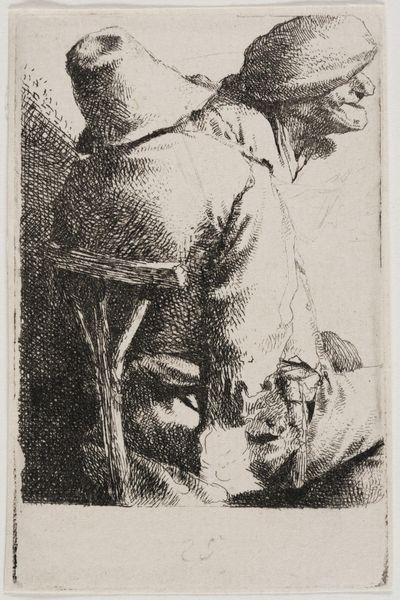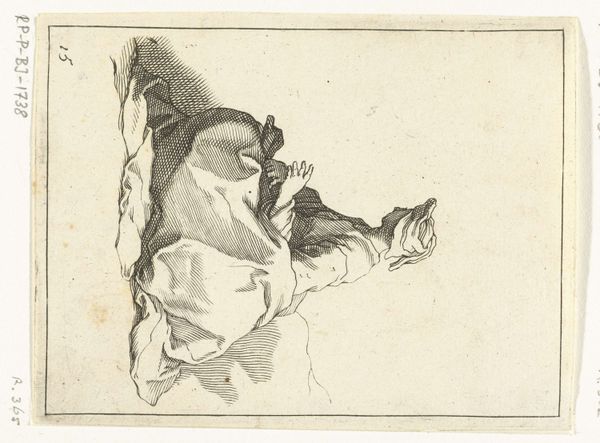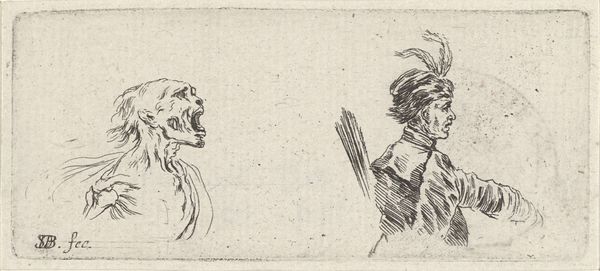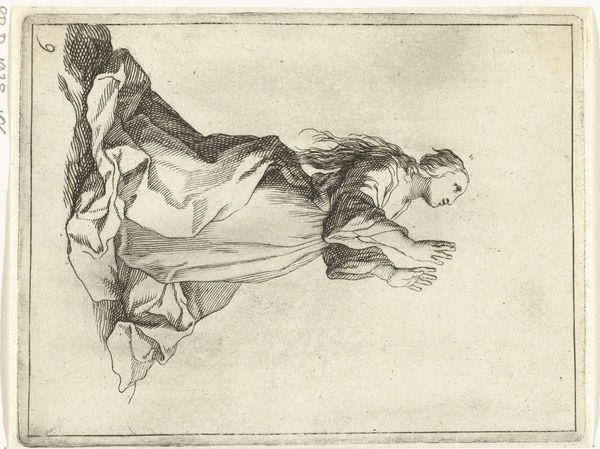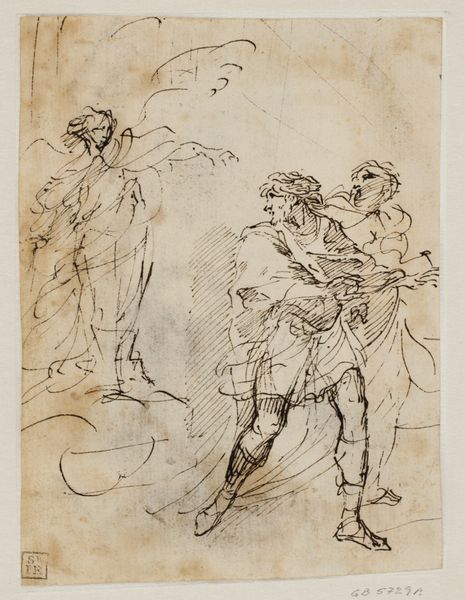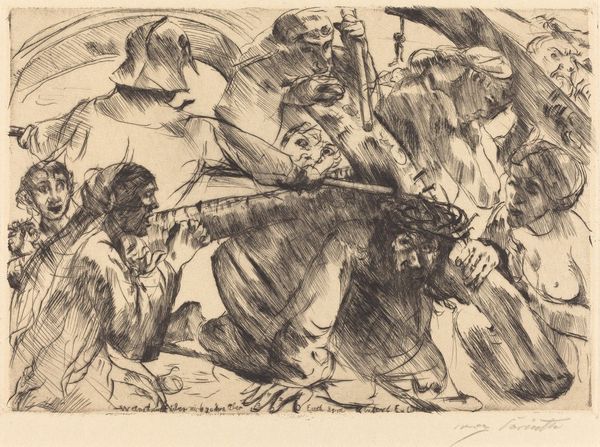
Dimensions: height 192 mm, width 231 mm
Copyright: Rijks Museum: Open Domain
Editor: Here we have George Hendrik Breitner’s "Paljas of torero, met opgeheven arm," created between 1867 and 1923, using pencil on paper. I'm struck by the figure’s almost theatrical pose. How do you interpret this work? Curator: I see this drawing as engaging with complex issues around performance and identity. Breitner lived in a time of significant social upheaval. How might this depiction of a "Paljas," a clown or fool, or a "torero," a bullfighter, reflect broader anxieties about class and social roles in that period? Consider also, the power dynamics inherent in these performance roles. Editor: So, it’s not just a portrait of someone dressed up. It’s more about what those costumes *represent* in society? Curator: Precisely. Breitner was active in artistic circles that questioned traditional hierarchies. What statement might he be making by depicting these figures with such… ambiguity? Is it critique? Is it empathy? Editor: It seems like there's both strength and vulnerability in the sketch, a push and pull. Curator: The very act of portraying someone in costume allows the artist – and us – to reflect on the layers of identity we all construct and perform, often in response to societal pressures. Editor: That’s really interesting. I hadn’t considered the performative aspect so deeply. Curator: Think about the societal gaze on marginalised groups, the "performance" that's often expected. It's all connected. Editor: I'll definitely view portraits differently now. It’s all more complex than it seems.
Comments
No comments
Be the first to comment and join the conversation on the ultimate creative platform.
